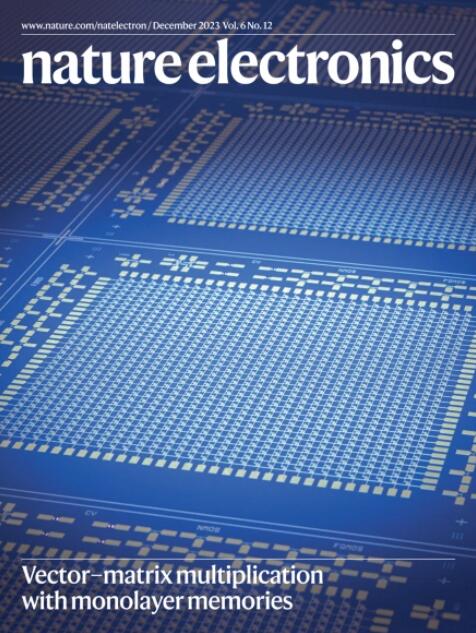A shape-morphing actuator that locks
IF 40.9
1区 工程技术
Q1 ENGINEERING, ELECTRICAL & ELECTRONIC
引用次数: 0

一种可以锁定的变形驱动器
来自清华大学和北京航空航天大学的研究人员将一种基于液晶弹性体带的热控制、可连续变形的驱动器与一种热控制的可变刚度形状记忆聚合物结合起来。通过蛇形加热电极层调节两个活性材料层的温度,并且气隙防止它们之间的热串扰。执行器的形状范围从平面构型到弯曲角度为340°的拱形,可以在任何中间状态下锁定。张和他的同事们利用乐高启发的设计策略创造了各种原型,并展示了发光二极管阵列的可变形三维形状,一个多模态轮式微型机器人,以及一个结合轮式和四轴飞行器运动的无系绳地空微型机器人。这款陆航微型机器人的尺寸为9厘米× 9厘米,重25克,(在地面模式下)可以达到每秒18个身长左右的速度。
本文章由计算机程序翻译,如有差异,请以英文原文为准。
求助全文
约1分钟内获得全文
求助全文
来源期刊

Nature Electronics
Engineering-Electrical and Electronic Engineering
CiteScore
47.50
自引率
2.30%
发文量
159
期刊介绍:
Nature Electronics is a comprehensive journal that publishes both fundamental and applied research in the field of electronics. It encompasses a wide range of topics, including the study of new phenomena and devices, the design and construction of electronic circuits, and the practical applications of electronics. In addition, the journal explores the commercial and industrial aspects of electronics research.
The primary focus of Nature Electronics is on the development of technology and its potential impact on society. The journal incorporates the contributions of scientists, engineers, and industry professionals, offering a platform for their research findings. Moreover, Nature Electronics provides insightful commentary, thorough reviews, and analysis of the key issues that shape the field, as well as the technologies that are reshaping society.
Like all journals within the prestigious Nature brand, Nature Electronics upholds the highest standards of quality. It maintains a dedicated team of professional editors and follows a fair and rigorous peer-review process. The journal also ensures impeccable copy-editing and production, enabling swift publication. Additionally, Nature Electronics prides itself on its editorial independence, ensuring unbiased and impartial reporting.
In summary, Nature Electronics is a leading journal that publishes cutting-edge research in electronics. With its multidisciplinary approach and commitment to excellence, the journal serves as a valuable resource for scientists, engineers, and industry professionals seeking to stay at the forefront of advancements in the field.
 求助内容:
求助内容: 应助结果提醒方式:
应助结果提醒方式:


